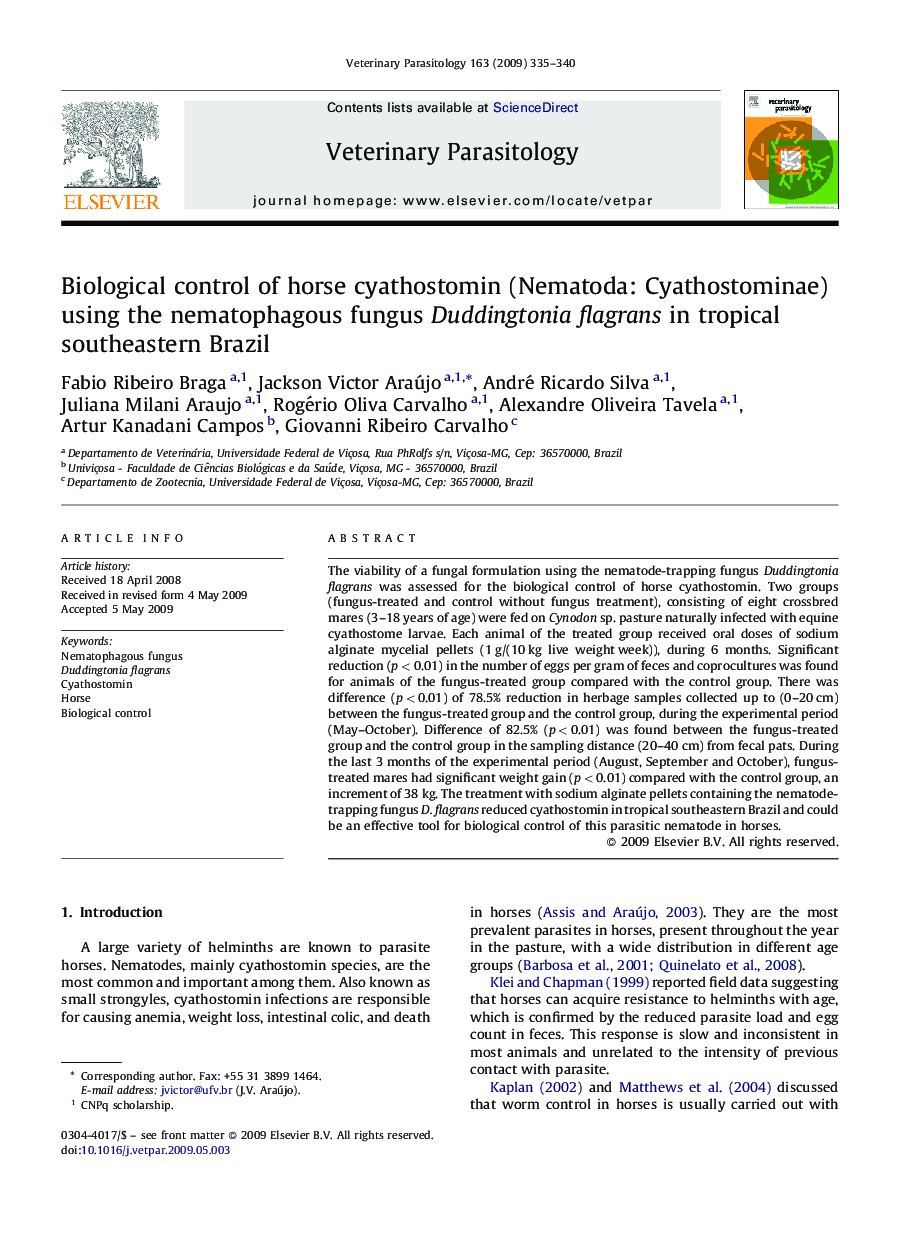| Article ID | Journal | Published Year | Pages | File Type |
|---|---|---|---|---|
| 2471233 | Veterinary Parasitology | 2009 | 6 Pages |
The viability of a fungal formulation using the nematode-trapping fungus Duddingtonia flagrans was assessed for the biological control of horse cyathostomin. Two groups (fungus-treated and control without fungus treatment), consisting of eight crossbred mares (3–18 years of age) were fed on Cynodon sp. pasture naturally infected with equine cyathostome larvae. Each animal of the treated group received oral doses of sodium alginate mycelial pellets (1 g/(10 kg live weight week)), during 6 months. Significant reduction (p < 0.01) in the number of eggs per gram of feces and coprocultures was found for animals of the fungus-treated group compared with the control group. There was difference (p < 0.01) of 78.5% reduction in herbage samples collected up to (0–20 cm) between the fungus-treated group and the control group, during the experimental period (May–October). Difference of 82.5% (p < 0.01) was found between the fungus-treated group and the control group in the sampling distance (20–40 cm) from fecal pats. During the last 3 months of the experimental period (August, September and October), fungus-treated mares had significant weight gain (p < 0.01) compared with the control group, an increment of 38 kg. The treatment with sodium alginate pellets containing the nematode-trapping fungus D. flagrans reduced cyathostomin in tropical southeastern Brazil and could be an effective tool for biological control of this parasitic nematode in horses.
